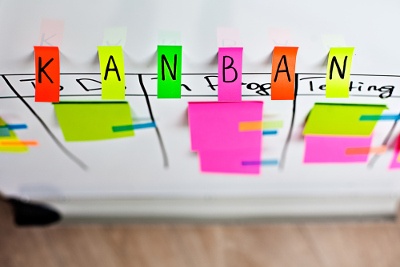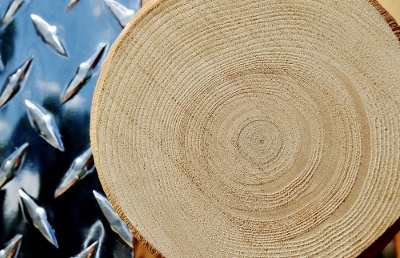Best in Manufacturing – February 25, 2018
Each Sunday, we publish a list of top articles and other content related to manufacturing in areas like quality control, product development, supply chain management, sourcing, auditing and law.
1. The risk of relying on Hong Kong trading companies
Let’s say you’ve got a novel product idea, and you want it manufactured in China. But you’re worried. You don’t want to work with any Mainland China (MC) companies...so instead, you work with one based in Hong Kong (HK). You feel the HK company better understands English, your needs, the rule of law and so forth.
Unfortunately, as this featured article points out, by working with a HK company instead, you may expose your business to even more intellectual property risk.
Hong Kong and Mainland China are two separate legal entities. Your important assets, like molds, tooling and prototypes, might pass through the HK company and get delivered to the MC factory. But if you have a contract with the HK company, it will likely have no bearing on the MC company.
If you decided to pursue legal action against the HK company, for example, what would they have as forfeitable assets? Not much. Per the featured article:
In most cases...the Hong Kong Seller has no real assets. The Seller is no more than a small office with a phone and computer and sometimes a small sales staff. All the productive assets are located in the PRC [People’s Republic of China], in the hands of companies and individuals with no direct legal relationship to the Hong Kong entity.
The factory in MC is where the real assets are (potentially including your tooling and so on). Contracting with a HK company without considering the legal relationship to the MC factory could jeopardize your operations.
It’s not good for your business to give away intellectual property for free to factories, who might even become your fiercest competitors. To learn more about intellectual property protection in the context of working with a HK or MC company, check out the featured article in the link below:
Hong Kong: Toto, We’re Not in Mainland China anymore - Steve Dickinson, China Law Blog
2. A Chinese supplier development program
When a supplier starts slacking, some importers immediately begin finding a new factory. They don’t consider introducing measures to improve product quality, like an unbiased product inspection. Or they might not consider discovering what’s happening at a managerial level there.
Sometimes, it really is worth packing up and switching to a new supplier. But there are certainly cases where it makes sense to continue using your current supplier and implement corrective measures.
This featured article offers some insight on Chinese supplier development. The article might help you determine the best course of action with your existing (or potentially new) suppliers. It mentions how you should:
- Select suppliers with the right profile: look for suppliers that want to improve and focus not just on growing their business but want to get better too.
- Ensure your quality standard is met: of course, you don’t want poor quality products. Get the goods you want by evaluating your supplier’s quality system and processes to see if your standards will be met.
- Pick low-hanging fruits: if you can, have someone qualified, like an industrial engineer, visit your factory and spot quick fixes that can lead to greater factory efficiency and require little or no investment.
- And more!
Getting Chinese suppliers up to par with your requirements can be a challenge. Check out this featured article for ideas on how to develop them so that you’re satisfied. You can read the full article by clicking on the link below:
Sourcing from China 101, Part 13: The 5 Steps to Developing a Chinese Supplier - Renaud Anjoran, Qualityinspection.org
3. Increase operational efficiency through Kanban
When I first heard the Japanese word “Kanban”, it sounded to me like an exotic candy. While you can’t eat Kanban, it’s still pretty sweet for improving operational efficiency.
What exactly is Kanban? From the featured article:
Kanban is a project management approach for nearly any step-by-step process to increase efficiency, reduce waste, and help a business improve.
Kanban helps pull items through a system as opposed to just pushing them through. Instead of creating parts ad nauseam, without regard for demand, Kanban instructs workers to look for cues to do more.
The example offered by the featured article is insightful. When at a grocery store, if items aren’t stocked on shelves, that’s a visual cue for staff to restock items. The workers don’t just mindlessly stock items until shelves are overflowing. They look for a cue, and as a result, items are pulled to the shelves rather than pushed there.
The Kanban approach utilizes boards, lists and cards to describe and prioritize tasks and offer relevant information. Websites like Trello are an opportunity to see this approach manifest and use it for your own company.
While I’m a little disappointed you can’t eat Kanban, it may serve as a way to improve your operations. To learn about Kanban, check out the featured article in the link below:
From Retail to Manufacturing, Kanban Improves Efficiency – Armando Roggio, Practical Ecommerce
4. Chinese business culture myths
Before I visited, I’ll admit that on a few occasions I heard people eat dogs, cats and other oddities in China. Some parts of China might actually eat strangely and have peculiar customs to a Western mindset. But before you come to China, it’s important to understand what is a myth and what isn’t so that you can more effectively conduct business.
This featured article discusses a few common myths about business culture in China, such as:
- Needing to smoke: if you don’t smoke, then don’t do it just to please your hosts. And imagine – if your host can get you to pick up an unhealthy habit via peer pressure, imagine what sort of business terms the host can get out of you later.
- Drinking copious amounts of alcohol: at most business dinners, you’ll have the opportunity to drink. Whether you want to is up to you. If you’re a male, there’s normally more pressure to drink.
- Eating weird food: there are definitely parts of China that offer “delicacies” during a business dinner. But by and large, food at business events isn’t so disgusting that you can’t even stand the sight of it, let alone eat it.
- And more!
While we’re on the topic of business culture in China, I’ll leave you with two tips that can potentially help you be received better by your host:
- Tap your fingers: as someone pours a beverage for you, tap your index and middle fingers on the table as a sign of thanks until the pouring is done.
- Play the “high-low glass game”: if your glass is higher, this represents you being in a higher position of authority and / or importance. If you bring your glass below that of your host, you’re being humble. Inevitably, there’s always a race to the bottom to show who is more humble.
Do you have any insights into business culture in China? Have you noticed any interesting customs not mentioned here? Let us know in the comments section at the bottom of this article!
To read more about business culture myths in China, check out the featured article in the link below:
Dispelling Common Chinese Business Culture Myths in 2018 – Bobby Lee, Hongda Business Services
5. Super wood as a high-performance material
Forget skyscrapers made of steel. What if they were made of super wood instead?
While a skyscraper made of super wood might be a stretch (just remember the Great Chicago Fire), in the future super wood might have other applications, like in planes and cars.
 Recently, engineers at the University of Maryland in College Park developed a new method to treat wood that makes it “12 times stronger than natural wood and 10 times tougher”. The improved wood is durable, and compared to carbon fiber, less expensive. It’s also “stronger than many titanium alloys”.
Recently, engineers at the University of Maryland in College Park developed a new method to treat wood that makes it “12 times stronger than natural wood and 10 times tougher”. The improved wood is durable, and compared to carbon fiber, less expensive. It’s also “stronger than many titanium alloys”.
This featured article mentions that in a test of the super wood, it was shot with a bullet-like projectile. The super wood is so tough, it was capable of stopping the projectile partway through.
It may seem hard to imagine. But what if in the future, instead of relying on carbon fiber and steel, companies could utilize a relatively renewable resource like wood? Although one of my main concerns is the threat of wood warping, I think it would be amazing for product designers, manufacturers and importers to have access to this new material.
Do you think super wood could change the way we create products and buildings? Let us know in the comments section at the bottom of the page!
If you’d like to read the abstract about this new, high-performance wood, you can learn more by checking out the scientific journal Nature. Otherwise, if you’d like to read the featured article that covers this topic, you can follow the link below:
Super Wood Could Replace Steel – University of Maryland via Manufacturing.net
We’re constantly scanning the web for top manufacturing stories and news. If you’d like to submit an article for consideration for our weekly Best in Manufacturing, send us a message and let us know.







